Urban Noise
Urban noise is a growing health concern and environmental issue. This is especially true as more humans move into densely populated city centers. The prevalence of urban noise is not only affected by the sources of sound, such as vehicular traffic, public transportation, construction activity and nightlife, but also the reflections and transmissions of those sounds by the materials that make up the urban environment.
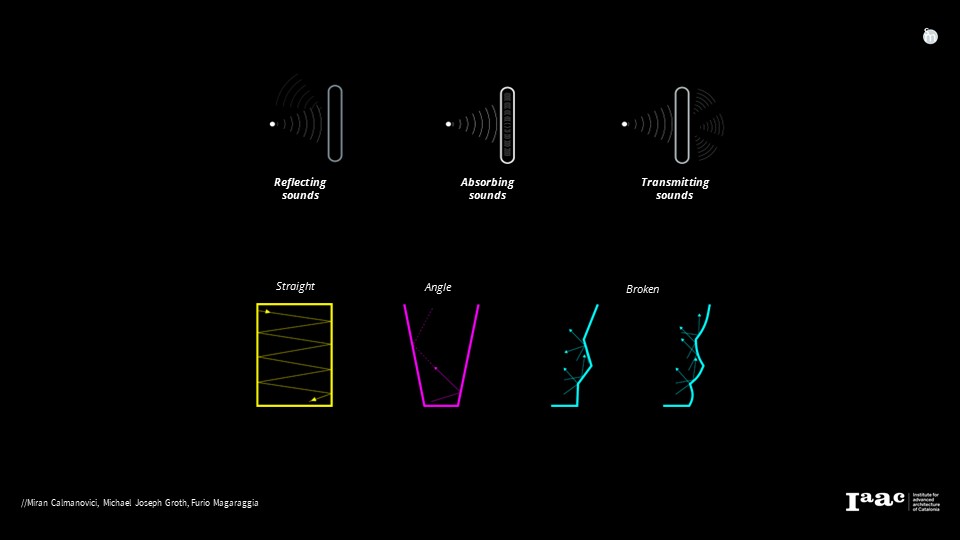
The canyon effect in urban environments
Cork Waste
At the same time, cities are surrounded by waste from commercial and industrial activities that ends up in landfills, which pollutes the earth, or in incinerators, which releases carbon and pollutes the air. For example, the cork stopper industry in the region surrounding Barcelona produces up to 50% waste material from the raw cork that it processes each year. Cork happens to be an excellent acoustic absorber, along with being highly durable and lightweight.
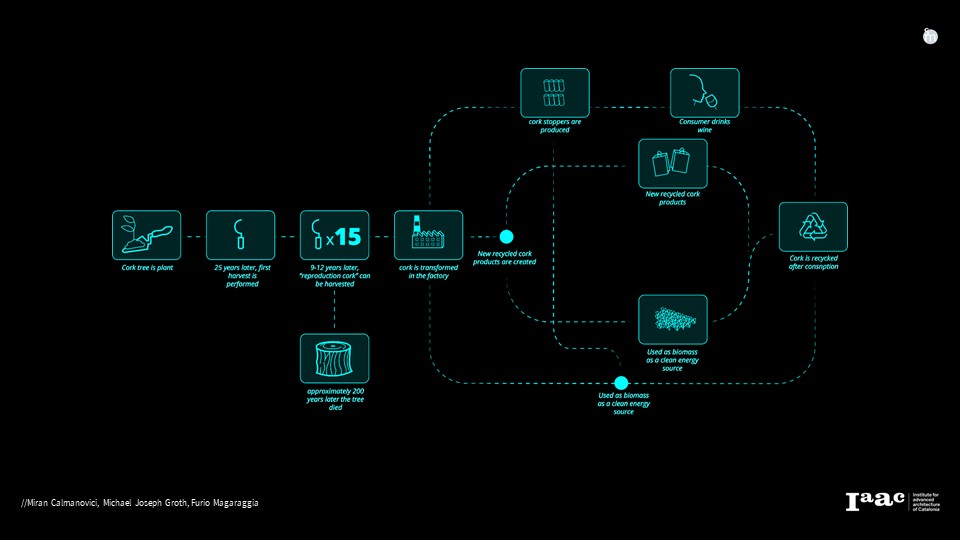
The lifecycle of cork
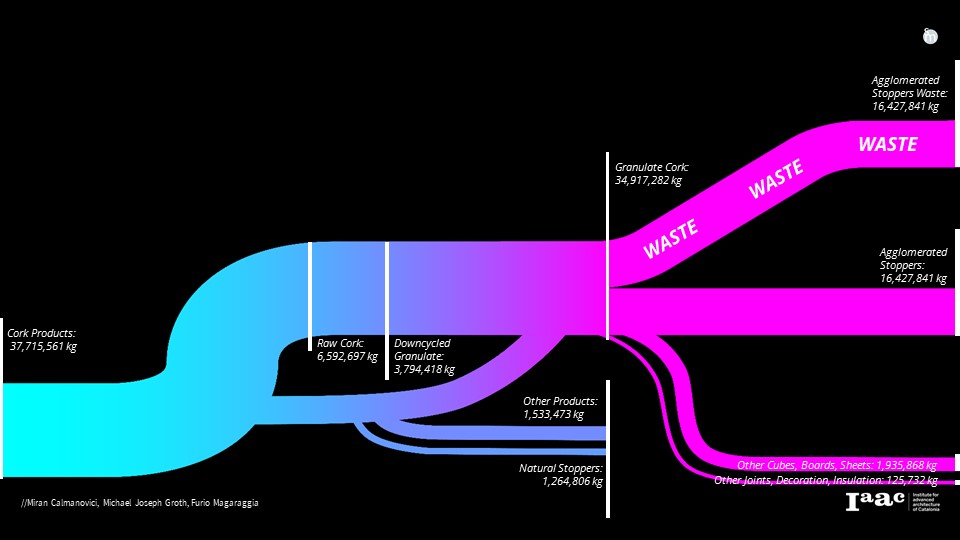
Cork waste sankey diagram
Research Question
What if we could capture this waste stream and use it to create a circular, upcycled solution to the problem of urban noise in Barcelona?
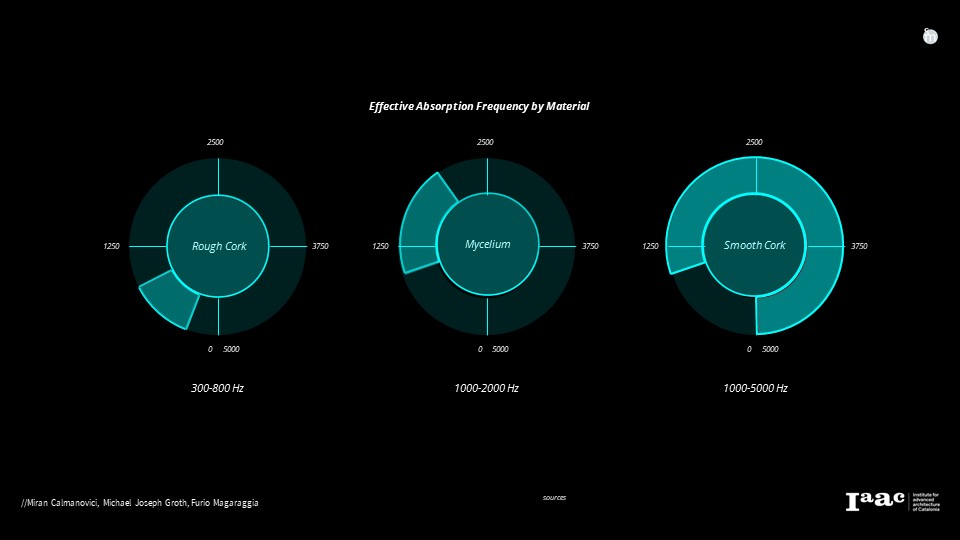
Acoustic absorption frequency performance of cork and mycelium
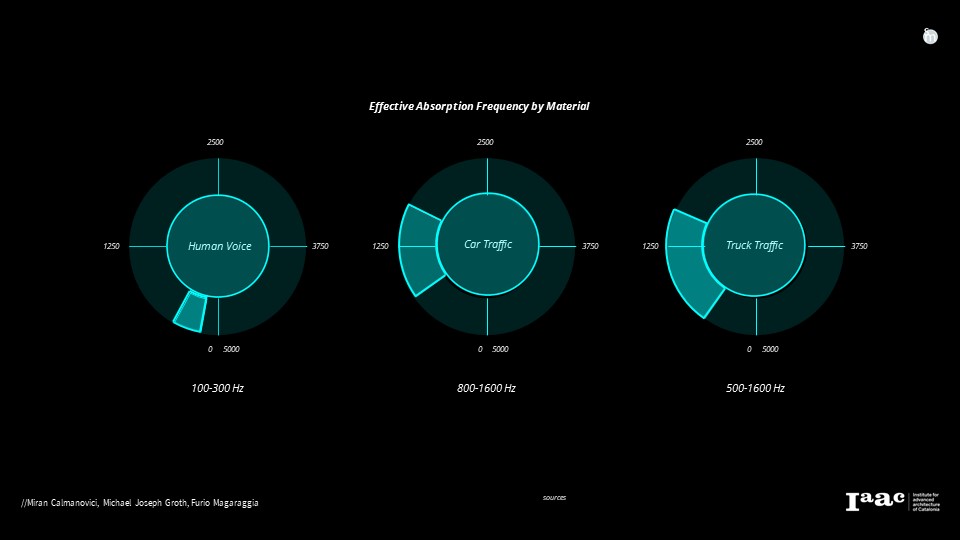
Frequency analysis of urban noise sources
Proposal
Our proposal is to create a modular system combining lightweight wooden frames housing textile molds full of cork granulate with mycelium as a natural, biodegradable binder. These modules could be deployed in areas with major urban noise, such as busy thoroughfares like carrer de Arago. A decibel level analysis on the surface of the site building is used to determine the aggregation pattern of modules. Further optimization of the panel geometries is performed using ray tracing from major sources of noise in the environment. The geometry of the aggregation is extended over the sidewalk to create quite zones for pedestrians while modules higher up the building reduce reflections off of hard surfaces as well as reduce transmission of noise to the interior of buildings.
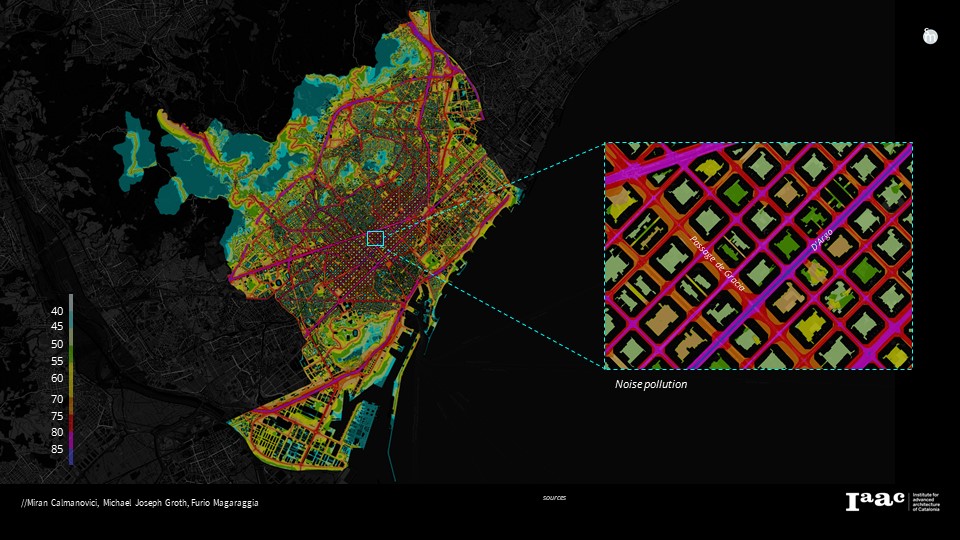
Acoustic heatmap of Barcelona
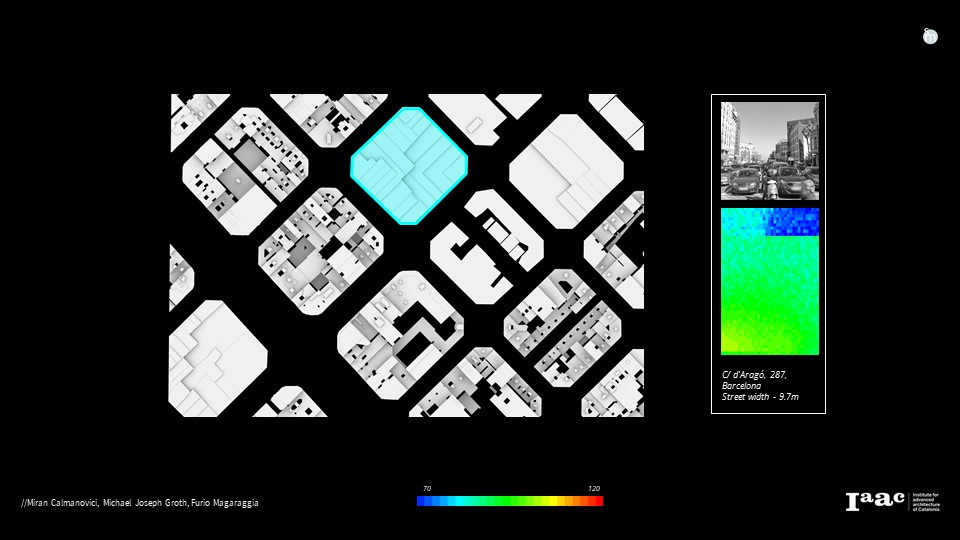
Chosen site along Arago
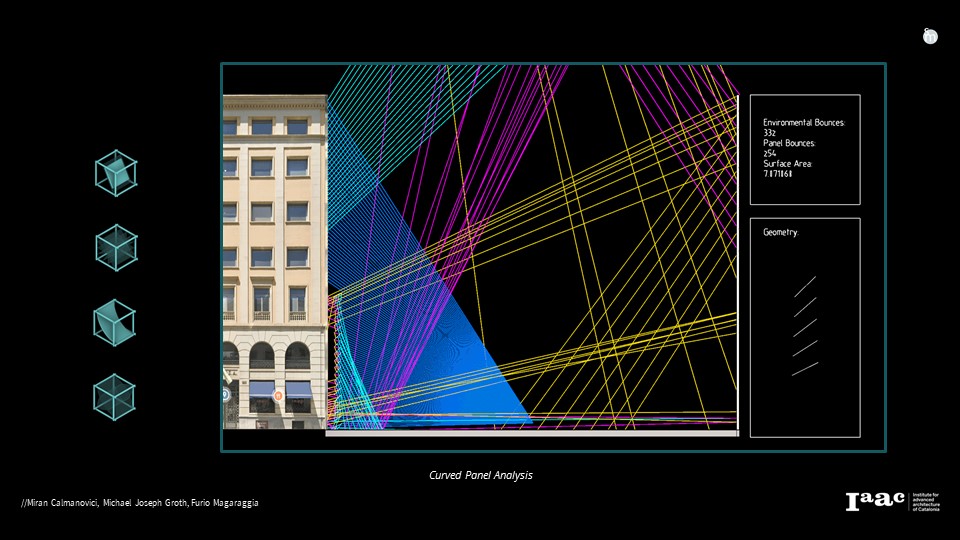
Acoustic optimization analysis
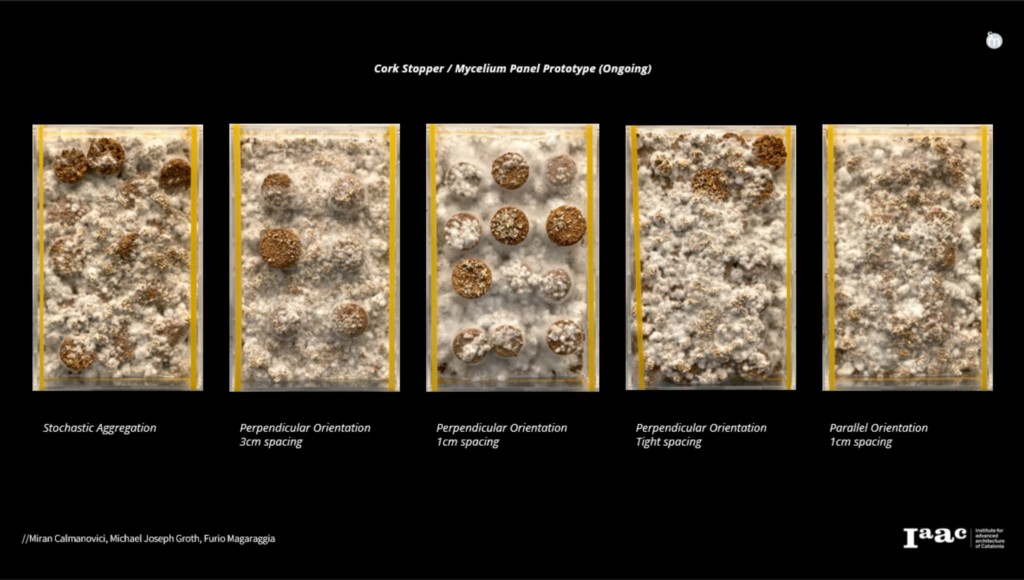
Mycelium and cork stopper panel tests
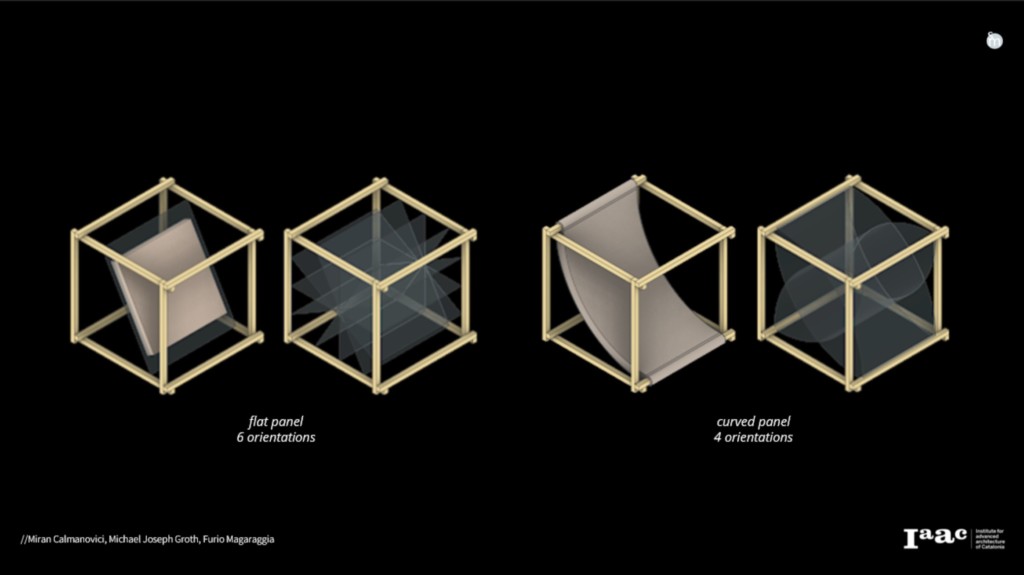
Wooden space frame with mycelium and cork panel iterations
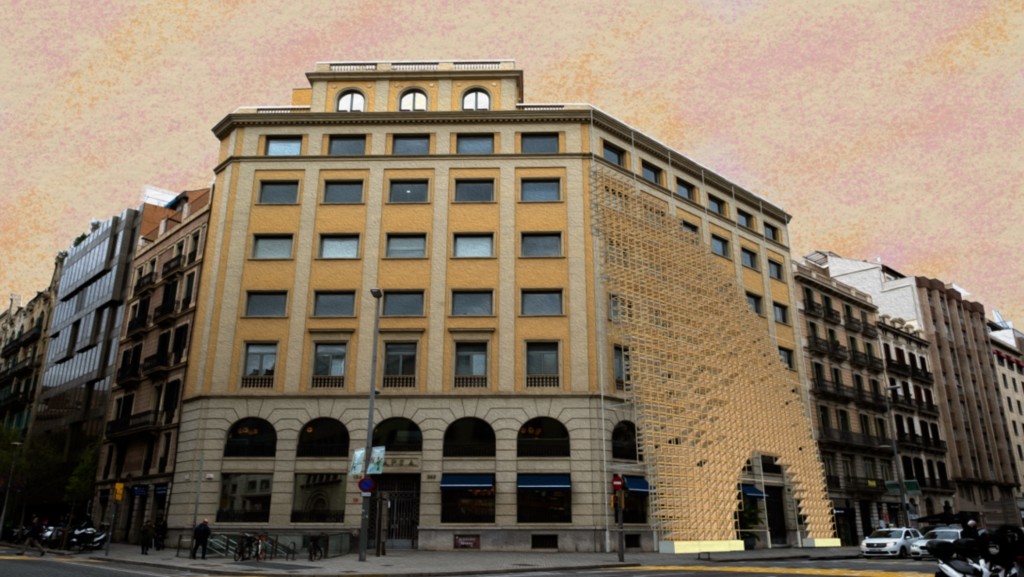
Render of internvention
Suro//Myco is a project of IAAC, the Institute for Advanced Architecture of Catalonia, developed during the Master in Advanced Architecture (MAA01) 2021/22 by students: Michael Groth, Furio Magaraggia, Miran Calmanovici; Faculty: Areti Markopolou, David Leon; Faculty assistant: Nikol Kirova, Eduardo Chamorro Martin; Student assistant: Alexander Dommershausen.